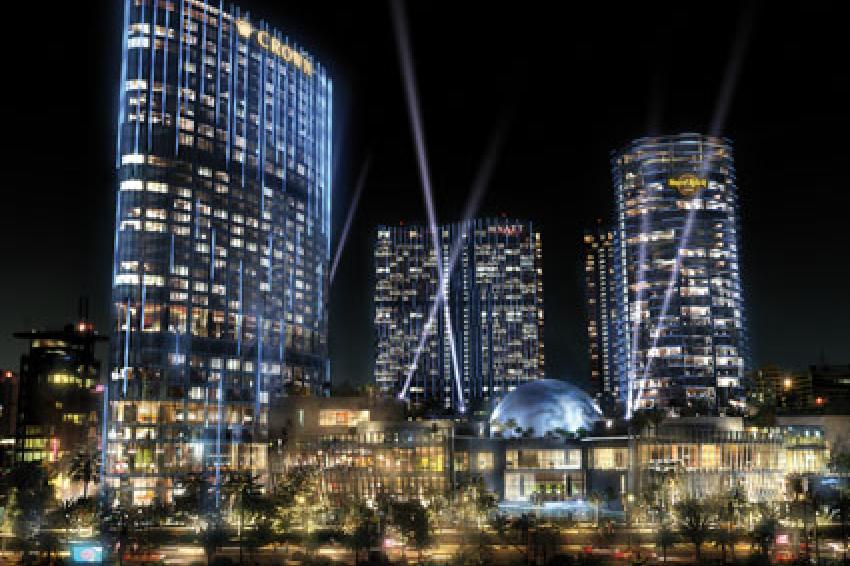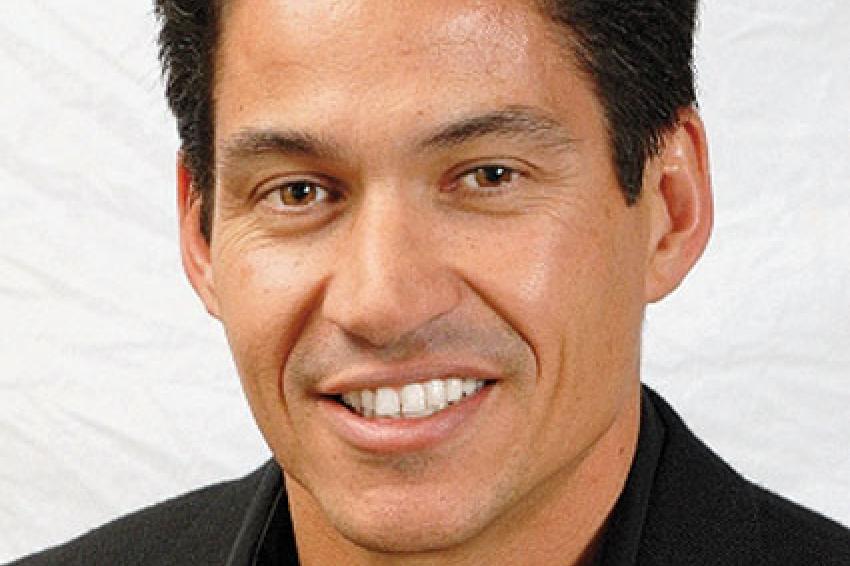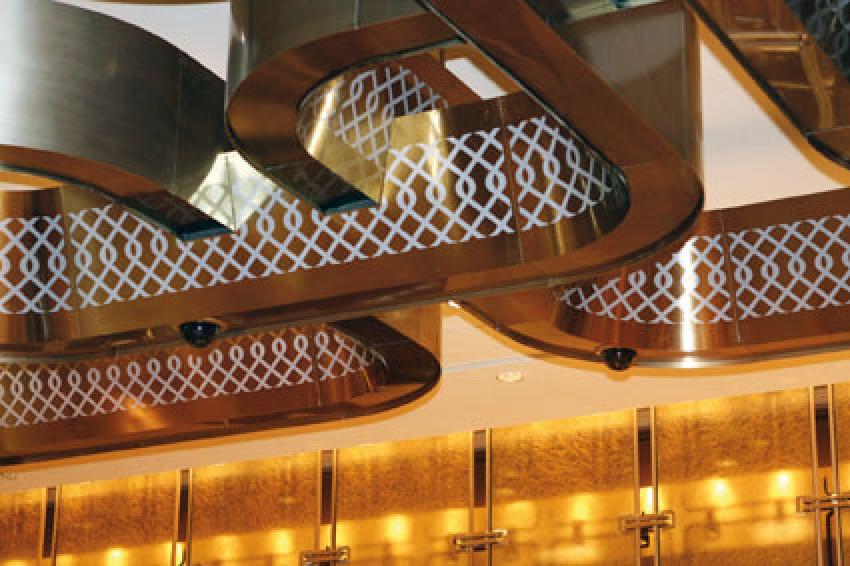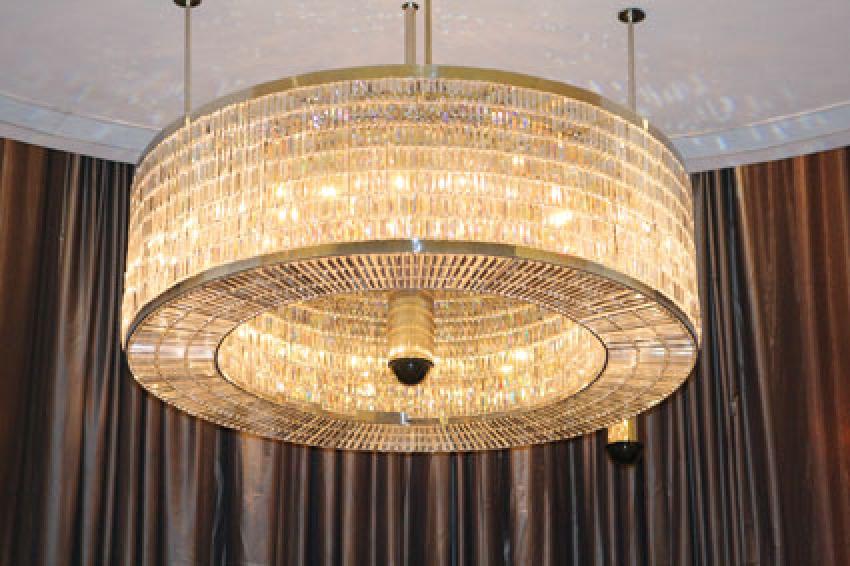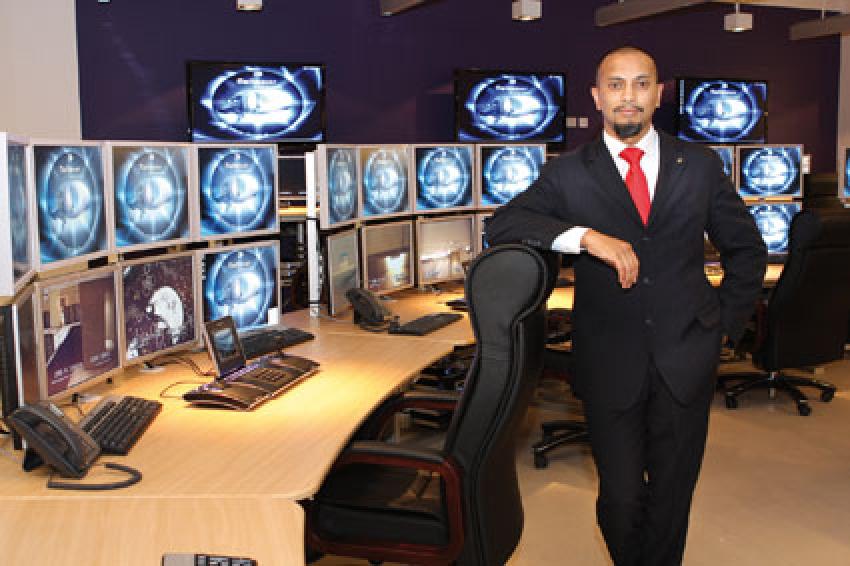A City of Dreams
Video Security Technology for the new „City of Dreams“ in Macau
The „City of Dreams" is a massive new casino project currently under construction in Macau - an integrated urban resort in which there will be exciting entertainment, elegant night clubs, a varied choice of hotels, first-class regional and international catering and world-class shopping as well as an expansive and modern casino. Part of the complex opened its doors to visitors already in June 2009. When it is completely open, the „City of Dreams" will have around 2,200 hotel rooms as well as 550 gaming tables and around 1,500 gaming machines. The complete video security technology comes from Dallmeier - and according to the manufacturer, this is the first and therefore largest pure IP-based surveillance system to date. Willy Allison, founder and president of World Game Protection, spoke with the Director of Surveillance of the City of Dreams, Leroy Daniel, before the big opening.
W. Allison: Mr. Daniel, what is the size of the surveillance room at the City of Dreams? How many control consoles and monitors are installed there?
L. Daniel: The central surveillance room covers more than 500 square meters and houses the central control of the surveillance system, the offices of the special agents, the administration, the central store and the workshops and technology training facility. In our department alone we work at 54 control consoles. The CCTV system can be actively controlled from any of these. We use around 260 monitors to watch what‘s going on.
What concept was used in the design of the surveillance room?
L. Daniel: Most people in my job normally have to make do with central surveillance installations of the CCTV systems that were designed and chosen by people who have never worked in casino surveillance. With the „City of Dreams" project, however, we had the freedom to decide for ourselves on every aspect of the layout of our control center. We paid particular attention to the functionality and meeting the staff management requirements as well as maintaining the overview (to enable quick decisions) and easing communication between each workstation. The needs of our security staff were naturally at the center of our considerations. Contrary to the usual layout in standard surveillance rooms where the duty manager sits either behind or at the end of the rows he‘s responsible for, we put his workstation right in the middle of the room on a raised dais. The individual workstations were then arranged in a circle around the duty manager‘s workstation. That makes communication in the surveillance center more effective and all the staff and monitors can be seen more easily. Instead of hanging rows of monitors on the wall, we brought the screens closer to the operators by using peripheral equipment. The small distance to the monitor enables the security staff to follow all the details of an event. This is particularly important when monitoring the progress of games in a casino.
How many staff are employed in the surveillance center in total?
L. Daniel: More than 100.
How many and what type of cameras are in use in your system? (manufacturer, megapixel etc.)
L. Daniel: We have almost 5,000 Dallmeier IP cameras with a PAL resolution of D1 (720 x 576 pixels) installed throughout the entire complex.
Who were the installer and supplier or manufacturer?
L. Daniel: Our system integrator is Elixir, a company with widespread experience in Asia. Elixir can provide local experts in Macau and swings into action immediately in the event of a problem. AME Systems supplied the workstations for our security staff. We chose this company because it is able to provide tailored solutions and also has an excellent support department with extremely competent installation teams. The CCTV system and the IP cameras come from Dallmeier.
Approximately how much have you invested in the entire system so far?
L. Daniel: More than 10 million US dollars. We can consider ourselves lucky that the company takes the subjects of investment protection and re-investment very seriously.
Can you explain to us how the system functions, for example, how the images get from the camera to the monitor?
L. Daniel: The surveillance system is IP-based with a decentralized system architecture consisting of servers, switches, workstations as well as network storage units (NSU) and cameras. The IP cameras encode the images at a speed of 25 fps at D1 resolution. Then the signal is sent over the surveillance network to be recorded on the NSU. The cameras support multicasting to transmit the live video stream to multiple workstations and monitors while the recorded images are sent from the NSU as a stream. The cameras are selected entirely via a virtual matrix. In this way we could save the usually large amount of space needed for an analog matrix and use the available space more effectively. We have here one of the first and largest completely IP-based surveillance systems for casinos. That means that the encoding of the images takes place directly in the IP camera before they are sent over the surveillance network. The decoding then takes place shortly before the images are presented on the LCD monitors.
How did you choose the system and for what reasons?
L. Daniel: We looked at what‘s available on the market and saw that, for our purposes, Dallmeier offered the best solution. If you look at the systems for prisons, airports, shopping malls, hospitals, universities and the like, you will find that only very few situations where CCTV is used are as demanding - or require a higher camera density - as a casino. It is necessary to have numerous workstations with live video streams as well as multiple consoles for real-time surveillance. We have to be able to replay the recordings at any time in high definition and in exact detail. The more individual details we can recognize during the course of the game, the better we can support the different business areas of the casino. It was vitally important for us to be able to trim the system to meet our requirements and get the optimum coverage of our gaming machines and other entertainment elements.
What challenges (technical or operational) did you have to overcome in order to implement a project of these dimensions?
L. Daniel: We had to solve the usual problems that occur with new projects, such as the conflicts between the CCTV system and the existing ceiling layout or the lighting systems, for example. The complexity of the systems made the project an interesting challenge. We have rooms with different ceiling heights as well as numerous decorative fixtures and differently designed lighting systems. So we used more than ten different methods to mount the cameras in order to adapt to the multiplicity of designs without having a negative effect on our takings. All this will certainly keep our technician busy with maintenance and service work in future.
How did you ensure that all the risk areas were covered when you were planning the system and the camera positions?
L. Daniel: There were a number of critical areas to consider with regard to the layout of the system. For example redundancy, system availability, network load, latency time, storage as well as archive capacity and network and system security. With regard to the cameras, the main focus was generally on profitable activities, high-value objects, gaming accessories, areas in which chips or cash are in use or being counted and peripheral profit centers. We have implemented an effective and modern concept for the demarcation of the security control room and surveillance center. As a result, we are able to turn ourselves fully to the task of surveillance as well as the security of the gaming operation and the profits.
Leroy Daniel: Many thanks for the interview.

